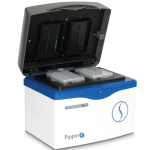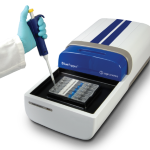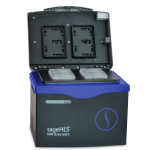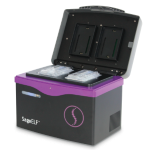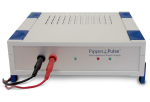Semiconductor-based DNA sequencing of histone modification states
October 2013
Authors:
Christine S. Cheng, Kunal Rai, Manuel Garber, Andrew Hollinger, Dana Robbins, Scott Anderson, Alyssa Macbeth, Austin Tzou, Mauricio O. Carneiro, Raktima Raychowdhury, Carsten Russ, Nir Hacohen, Jeffrey E. Gershenwald, Niall Lennon, Chad Nusbaum, Lynda Chin, Aviv Regev & Ido Amit
Info:
Researchers at the Broad Institute and collaborators at several institutions provide optimized sample preparation protocols for the generation of ChIP-seq libraries on the Ion Torrent PGM. They showed that Pippin size selection was required to generate usable libraries, even down to sub-nanogram input. Results were comparable to results from Illumina Chip-Seq workflow.
Citation:
Nature Communications 4:2672
Mitochondrial Sequence Variation in African-American Primary Open-Angle Glaucoma Patients
October 2013
Authors:
David W. Collins, Harini V. Gudiseva, Benjamin T. Trachtman, Matthew Jerrehian, Thomasine Gorry, William T. Merritt III, Allison L. Rhodes, Prithvi S. Sankar, Meredith Regina, Eydie Miller-Ellis, Joan M.
O’Brien
Info:
Researchers at the University of Pennsylvania deep-sequenced mitochondrial DNA of patients with primary open-angle glaucoma, plus a control group for comparison. They testing a theory implicating variation in mtDNA in this disease, but it could not be confirmed. Pippin Prep was used for size selection of Ion PGM libraries, per the Ion Express protocol.
Citation:
PLoS ONE 8(10): e76627
Genetic Basis for the Biosynthesis of the Pharmaceutically Important Class of Epoxyketone Proteasome Inhibitors
October 2013
Authors:
Michelle Schorn, Judith Zettler, Joseph P. Noel, Pieter C. Dorrestein, Bradley S. Moore, and Leonard Kaysser
Info:
Scientists from California and Germany teamed up to study genes that encode for the biosynthesis of an important component of certain proteasome inhibitors used for cancer treatment. The Ion PGM was used to sequence gene clusters in two microbial strains, reporting the first successful characterization of a region producing natural peptidyl-epoxyketones. For this project, libraries were prepared from genomic DNA sheared to 100 bp to 250 bp, after which sequencing material was separated and extracted using Pippin Prep.
Citation:
ACS Chem. Biol. October 2013
Genetic Basis for the Biosynthesis of the Pharmaceutically Important Class of Epoxyketone Proteasome Inhibitors
October 2013
Authors:
Michelle Schorn, Judith Zettler, Joseph P. Noel, Pieter C. Dorrestein, Bradley S. Moore, and Leonard Kaysser
Info:
Collaborators in the U.S. and Germany report on the genetic pathway for the production of epoxyketone proteasome inhibitors, used as anti-cancer therapeutic agents, in bacterial strains. The Pippin Prep was used to size select DNA prior to Ion Torrent sequencing.
Citation:
ACS Chem. Biol. 2014, 9, 301−309
Quick, sensitive and specific detection and evaluation of quantification of minor variants by high-throughput sequencing
October 2013
Authors:
Ross Ka-Kit Leung, Zhi Qiang Dong, Fei Sa, Cheong Meng Chong, Si Wan Lei,c Stephen Kwok-Wing Tsui and Simon Ming-Yuen Lee
Info:
Scientists from the University of Hong Kong and the University of Macau, China, evaluate errors in detecting minor variants and suggest rules for authenticating the variants and improving accuracy of detection. The Pippin Prep was used for library preparation on the Ion Torrent platform.
Citation:
Mol. BioSyst., 2014, 10, 206
